On September 13, 2022, the Prancing Horse made history with the Ferrari Purosangue (Type F175), the marque’s first-ever SUV. This Italian masterpiece blurs the lines between high performance and luxury, competing head-to-head in the high-performance SUV arena against the likes of Lamborghini Urus and Aston Martin DBX.
Riding on the Ferrari Roma coupe platform gave the Purosangue a distinctive fastback design and innovative rear door setup for easy access. Development of the Purosangue, codenamed F175, began in 2017 and faced a legal battle over its name, which translates to "thoroughbred" in Italian. Spy shots and leaks in 2018 and 2022 built anticipation right up to its official reveal.
What makes the Purosangue truly exceptional? It’s the guts. The powertrain. It’s the 12-cylinder heart and soul plus the incredible road manners. Ferrari’s Purosangue is currently the only luxury performance SUV cradling a V12 engine, setting it apart as a symbol of power and performance. Let's take a closer look at this heart and soul - the engine and powertrain that makes Purosangue the unparalleled choice for a blend of luxury and adrenaline.
Related Reading: The Fastest SUV In The World: Faraday Future FF91 And 10 Others
The Ferrari Purosangue: Unveiling the Mid-Front-Mounted V12 Engine
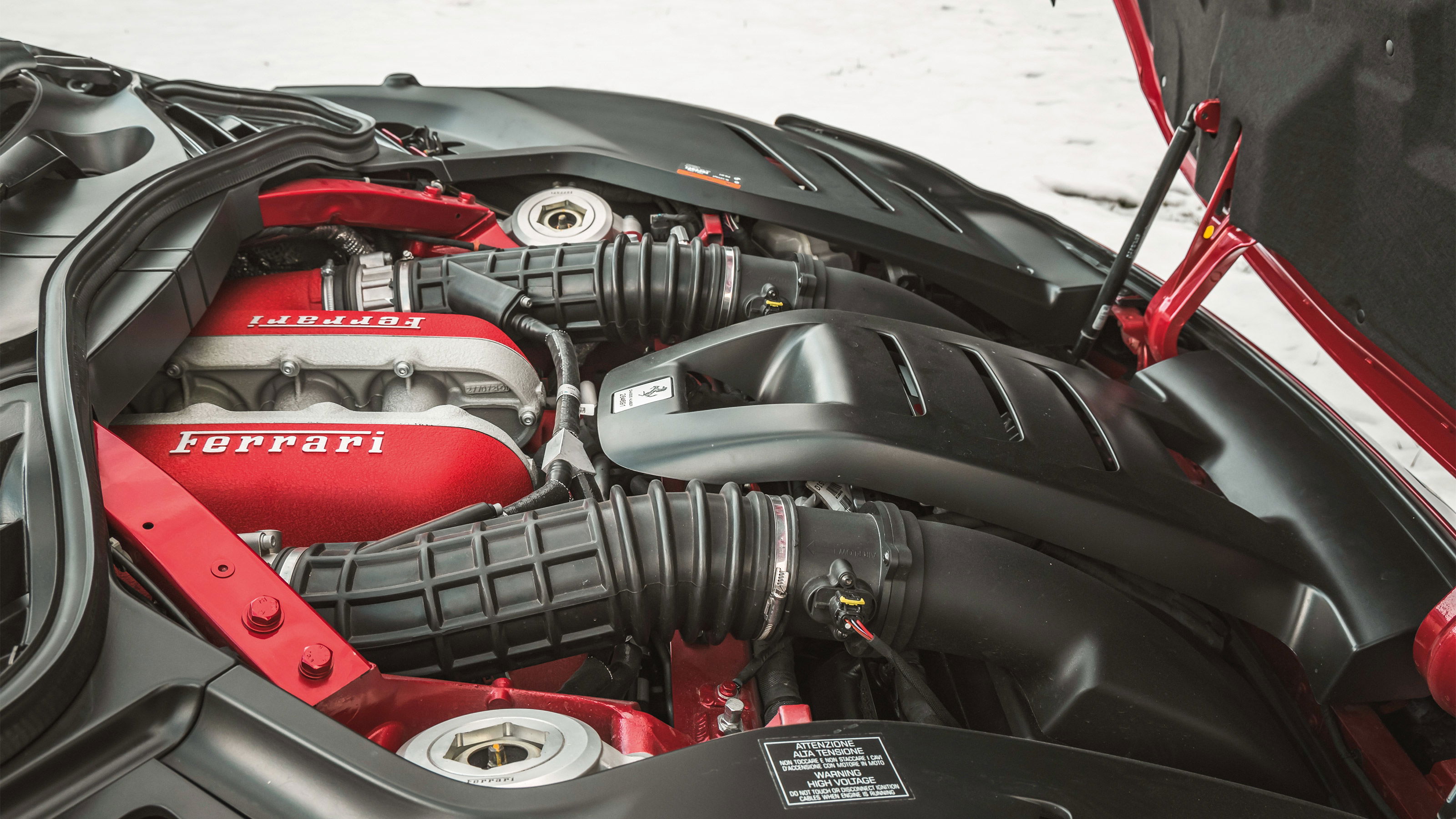
Remarkable is an understatement for the Ferrari Purosangue, rocking a mighty mid-front-mounted, naturally-aspirated V12 engine. This unique configuration allows it to deliver an impressive 715 horsepower to leave its mates in the rearview mirror while ensuring an unforgettable Ferrari engine soundtrack.
Ferrari paid meticulous attention to the Purosangue’s heart, resulting in the F140IA engine delivering substantial torque at low revs without sacrificing the hallmark linear and never-ending power characteristic of Ferrari's naturally aspirated V12s. With a remarkable 80% of maximum torque available at a mere 2,100 rpm and a peak of 529 lb-ft at 6,250 rpm, this engine earned the controversy surrounding it.
Achieving the maximum power of 715 hp occurs at 7,750 rpm, and that's how Purosangue gets its sports car-like throttle response. The F140IA engine design is now thoroughly revamped, with reimagined intake, timing, and exhaust systems.
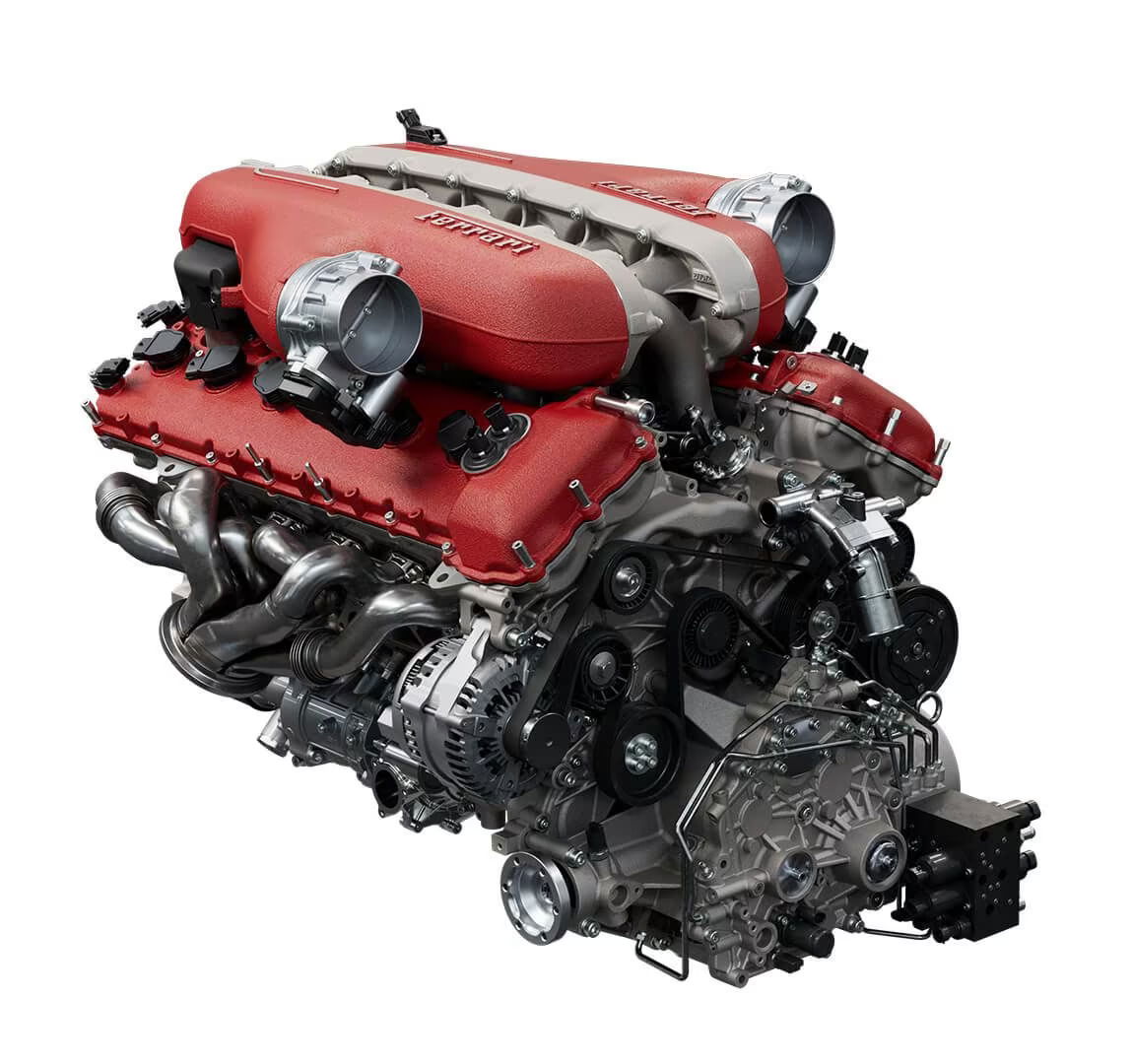
It also incorporates cylinder heads derived from the 812 Competizione, emphasizing both mechanical and combustion efficiency inspired by Formula 1 principles.
Remaining true to the architecture that made Ferrari's recent 12-cylinders a triumph, the engine maintains a 65° angle between its cylinder banks, boasts a 6.5-liter capacity, utilizes a dry sump, and incorporates high-pressure direct injection.
To maximize mechanical efficiency, Ferrari says the rotating masses have been carefully redesigned, including adjustments to the nitrided steel crankshaft for an extended stroke. They also enhanced the internal oil galleries to optimize oil flow to the big-end bearings, resulting in improved fuel consumption due to lower bearing clearance tolerances.
The direct injection system is equally impressive, featuring two high-pressure fuel pumps (operating at 350 bar) that deliver fuel to the combustion chambers. With 12 coils and spark plugs, this system is meticulously monitored by the ECU, which includes an ion-sensing system to fine-tune ignition timing.
Furthermore, the ECU controls combustion in the chamber, optimizing thermodynamic efficiency based on the fuel's octane rating (RON). This sophisticated strategy ensures the engine always operates at peak performance.
Adding a touch of Formula 1 expertise, the engine strategy incorporates a patented function that optimizes torque during transient acceleration maneuvers in the low and mid-range, enhancing the Purosangue's performance and responsiveness on the road.
The Ferrari Purosangue Exhaust Note: An Unforgettable Engine Symphony

The Purosangue’s F140IA engine is a testament to the perfect fusion of raw power and expert acoustic engineering, giving birth to an unforgettable soundtrack within the cabin. The exhaust manifolds have been specifically tuned to ensure that the 12 cylinders perform in perfect harmony.
A new plenum complements the V12's high notes with the body of medium frequencies, while the two progressive silencers adapt seamlessly for both city driving and high-performance scenarios. The result is a sound signature that's quintessentially Ferrari, with those distinctive V12 harmonics persisting until the driver decides to unleash the full potential.
As the engine approaches the 8,250-rpm redline, the captivating crescendo reaches its zenith at the kind of high revs only Ferrari's engines can manage. This means that not only is the Ferrari Purosangue home to the most powerful engine ever created by Ferrari for a four-seater vehicle, but it also eyes the crown of the most powerful in its segment.
The Purosangue Sounds Better With DMC's Aftermarket Carbon-Fiber Widebody Kit And Titanium Exhaust

For the fortunate owners of the highly sought-after Ferrari Purosangue SUV, renowned German tuner DMC offers a unique opportunity for personalization. The company’s carbon-fiber widebody kit, coupled with a titanium exhaust system that amplifies the sound, is set to redefine the Purosangue experience.
DMC recognizes that the Purosangue, while impressively agile, could benefit from extra touches of flair. In their own words, they intend to "add a bit more sport" to this performance SUV. Staying true to their signature style, DMC has teased the body kit through a series of captivating renderings set in an industrial warehouse environment.
It's a good thing DMC is focusing on Purosangue's aesthetics and leaving the formidable V12 engine as is. Isn’t it?
Straight from the Maranello factory, the F140IA continues to deliver a commanding 715 hp and 528 lb-ft of torque. However, for those who crave an auditory thrill beyond the stock unit, DMC presents an all-new sports exhaust.
This flow-formed titanium exhaust, designed in collaboration with the German company Zesad GmbH, has been tailored to suit the Ferrari Purosangue perfectly. With a valve-controlled system, it grants the driver the power to summon a more resonant and exhilarating auditory experience from the four quad tailpipes, ensuring that every drive is a symphony of power and sound.
Related Reading: Speed Demons on Four Wheels: The Top 12 Fastest American SUVs You Need To Know
The Ferrari Purosangue’s Exceptional 8-speed Dual-Clutch Transmission
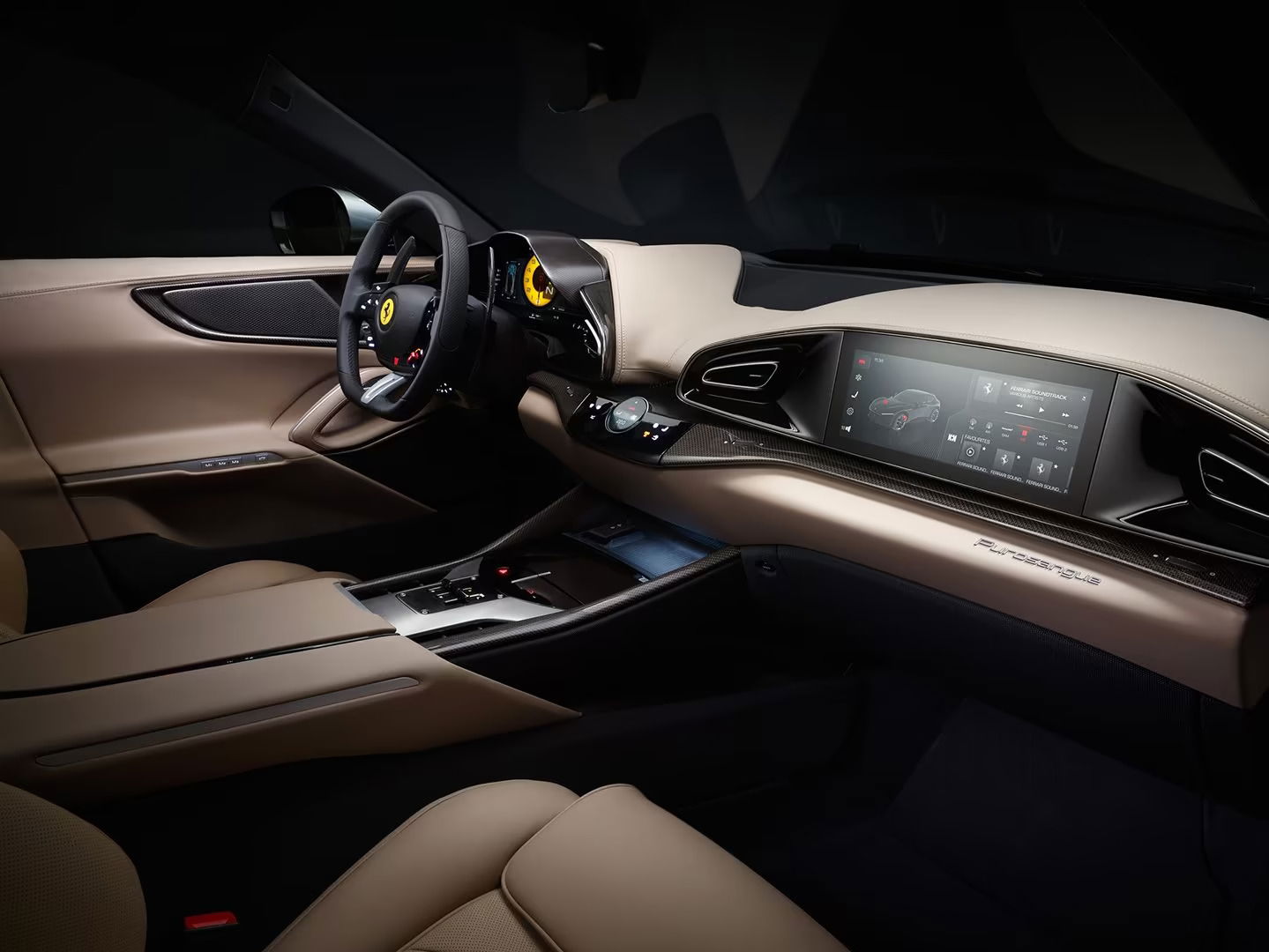
The Ferrari Purosangue boasts an 8-speed, oil-bath dual-clutch transmission that has undergone thorough optimization. Introducing a dry sump and a notably more compact clutch assembly has achieved a remarkable reduction of 15 mm in the installed height within the car. This, in turn, contributes to lowering the center of gravity by the same measurement, enhancing the vehicle's stability and handling.
Notably, the new clutch's performance has surged by an impressive 35%, allowing it to transmit up to 886 lb-ft of dynamic torque during gear shifts. Ferrari’s use of state-of-the-art actuation hydraulics has significantly reduced clutch fill times, resulting in quicker overall gear shift times compared to the previous 7-speed DCT.
The transmission's new gear ratios have been thoughtfully designed to provide shorter, more progressive spacings. Additionally, the engineers integrated a longer top gear ratio to enhance fuel efficiency during highway cruising.
Special attention has been given to downshifts, fine-tuning them for optimal smoothness, all while emphasizing the sonorous symphony of the new V12 engine. This transmission should not only enhance Purosangue's performance but also amplify the pleasure of driving the SUV.
Ferrari Purosangue certainly excels in acceleration figures and response times, but the automaker paid equal attention to the in-gear acceleration when in manual mode. Thus, accentuating the SUV’s exceptional elasticity and pick-up. The Purosangue makes the most of its advanced 8-speed DCT, optimizing its mechanical, power, and control aspects.
The gear ratios closely align with those in the SF90 Stradale and 296 GTB. Thanks to larger tires, however, these ratios are shorter than in previous Ferrari 4-seaters, ensuring more gradual and progressive performance during acceleration.
The eighth gear, on the other hand, is designed to enhance the driving experience during long-distance journeys. The transmission's software control enhances performance through a notable reduction in up and down shift times, roughly amounting to an 18% improvement.
Additionally, the "Sailing" function decouples the engine and gearbox automatically in driving conditions where traction isn't necessary, promoting smoother driving, particularly during braking.
Ferrari Purosangue: The Performance And Aerodynamic Mastery
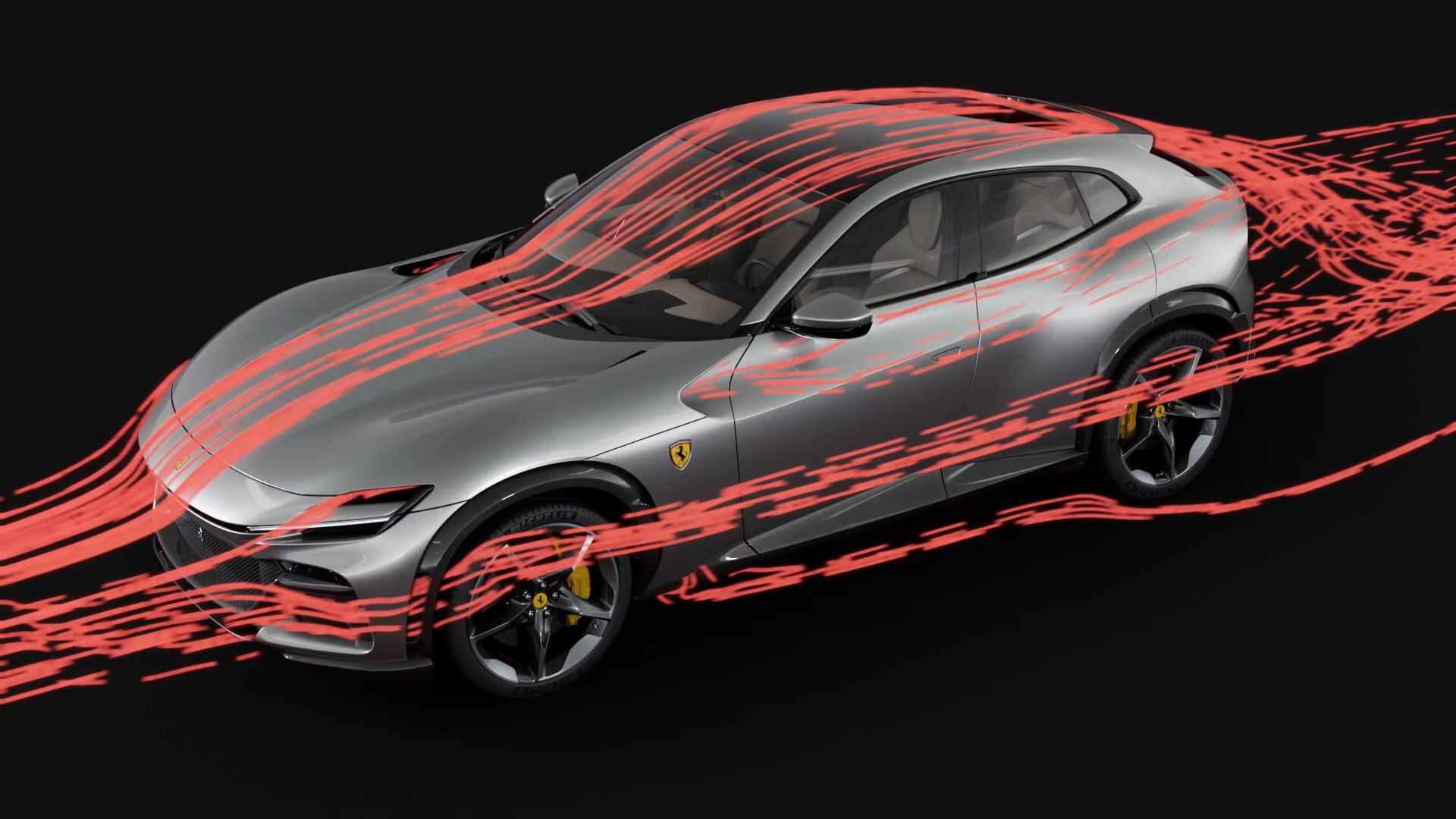
The Ferrari Purosangue sets a new standard in the world of high-performance SUVs, boasting remarkable performance figures of a 0 to 60 mph sprint in just 3.3 seconds and a 0 to 124 mph acceleration in a mere 10.6 seconds.
But it's not just about speed; the driving experience includes the commanding driving position and the intoxicating symphony of the naturally aspirated V12 engine. The Purosangue's design presented a unique challenge for Ferrari's aerodynamic team.
Achieving ambitious targets for drag reduction, addressing the specific requirements of this model, and managing the cooling demands of the robust V12 engine demanded extensive work. This involved, the automaker says, countless hours in the wind tunnel and thousands of Computational Fluid Dynamics (CFD) simulations, akin to the development work dedicated to Ferrari's fastest and most powerful sports cars.
A key focus of Purosangue's aerodynamic design was the centerline section of the car, crucial for optimizing airflow and reducing the drag coefficient (Cd) while minimizing the frontal surface area.
The carefully sculpted front silhouette creates a seamless transition between the hood’s curvature and the windscreen header rail. At the rear, extensive attention was devoted to the roof, rear screen, and spoiler to effectively manage flow separations and pressure fields.
The Purosangue's dynamic performance posed a unique challenge, requiring building a vehicle that offers unmatched levels of comfort and usability. Simultaneously, it had to deliver the signature Ferrari vehicle dynamics and performance on par with the rest of the Ferrari range.
Ferrari Purosangue: Mastering The Art Of Performance And Handling

With the Ferrari Purosangue, the Italian marque introduced an industry-first innovative active suspension technology powered by Multimatic's True Active Spool Valve (TASV) System. This cutting-edge suspension architecture offers numerous advantages over other solutions on the market.
At its core, the Purosangue's active suspension system combines electric motor actuation with a high-precision spool valve hydraulic damper, forming a seamlessly integrated unit. The electric motor plays a pivotal role, actively controlling both the body and wheels with remarkable force authority and at higher frequencies than conventional adaptive or semi-active systems.
Ferrari's system is unique thanks to the speed at which the TASV 48-volt motor actuators apply force along the damper's stroke. Co-developed by Ferrari, the high-power density, three-phase brushless electric motor leverages "slotless" stator winding technology to minimize radial dimensions while maximizing power density.
Mechanically, the motor's force transmission occurs through a twin-lead ball screw directly connected to the hydraulic damper piston rod. This innovative approach ensures high-frequency response, reduces friction and inertia, and optimizes package space.
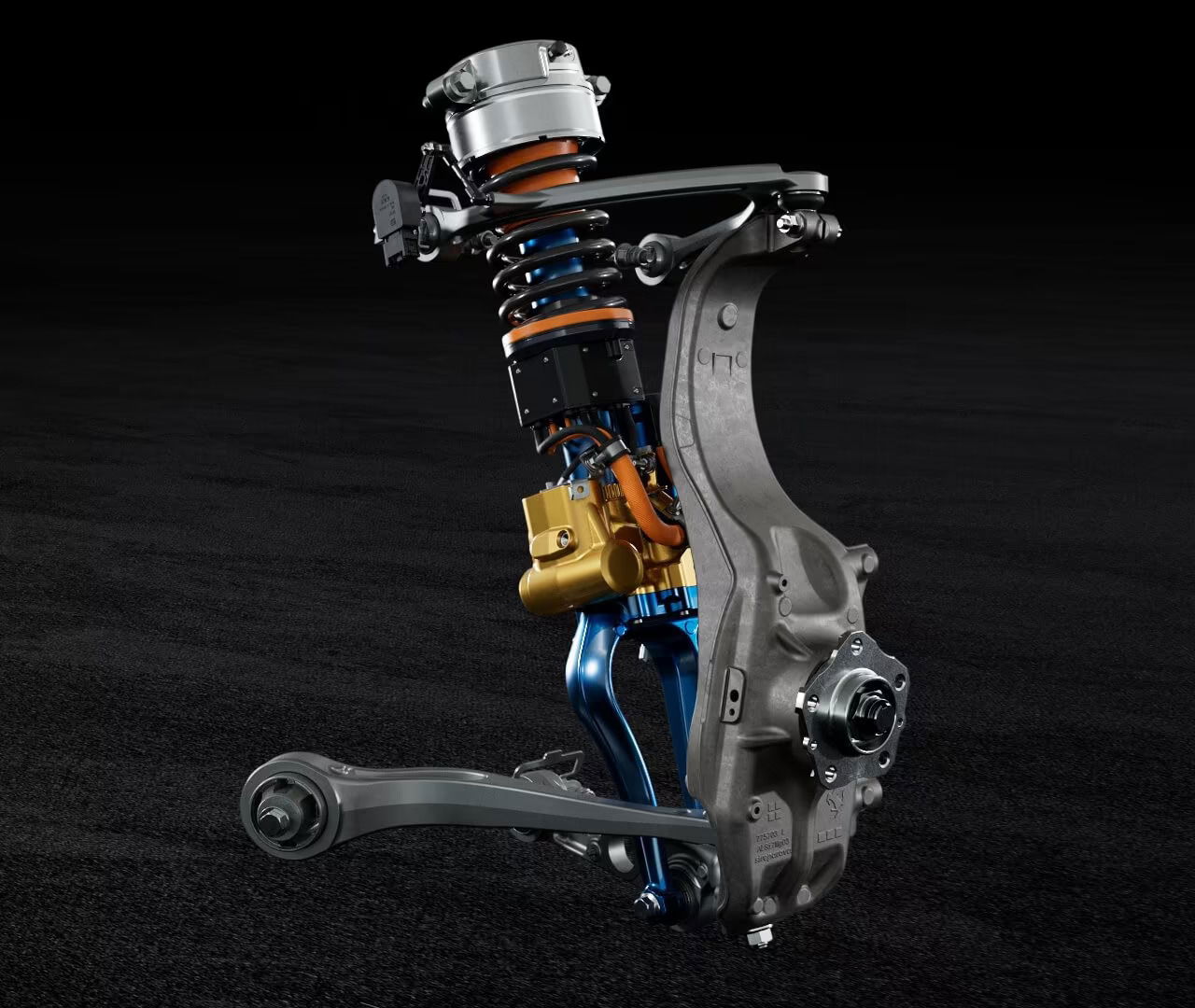
The active suspension system relies on accelerometers and position sensors at each suspension corner, seamlessly interfacing with Ferrari's Side Slip Control (SSC) 8.0 and the 6w-CDS sensor. The proprietary control logic, combined with TASV dampers provided by Multimatic, electronically manages every performance aspect of the fully active suspension system.
This technology optimizes cornering performance by dynamically distributing roll stiffness and lowering the roll center, effectively enhancing the balance between oversteer and understeer. It also efficiently controls body motion and wheel movement, reducing roll and pitch while absorbing road irregularities.
Beyond the active suspension system, the Purosangue uses a new-generation front semi-virtual, high wishbone suspension. It enhances the SUV’s steering precision by reducing scrub radius, particularly valuable when encountering road imperfections or braking.
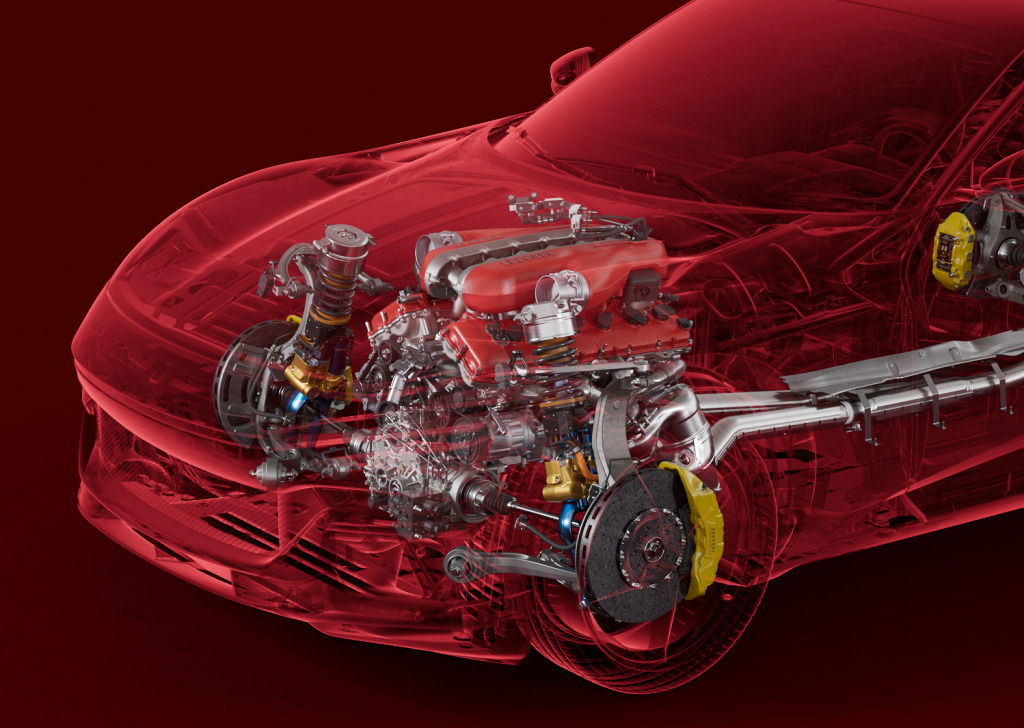
Moreover, the Purosangue features the ABS 'evo' controller, developed in collaboration with Bosch®, integrated with the brake-by-wire system for improved performance and repeatability in various road conditions.
The engineers refined the EPS-based grip estimation system, originally developed for the 296 GTB, for driving in low-grip scenarios, providing precise grip estimations in a variety of conditions.
Furthermore, the Purosangue's 4RM-S system, derived from the GTC4Lusso, has been further evolved, combining elements from the SF90 Stradale's 4WD system and the new independent 4WS found in the 812 Competizione.
This refined electronic management enhances cornering performance, optimizing yaw control through torque vectoring on the front axle, torque distribution by the E-Diff, and lateral force generation by the 4WS, culminating in heightened precision and performance.
How Much Is Ferrari Purosangue?
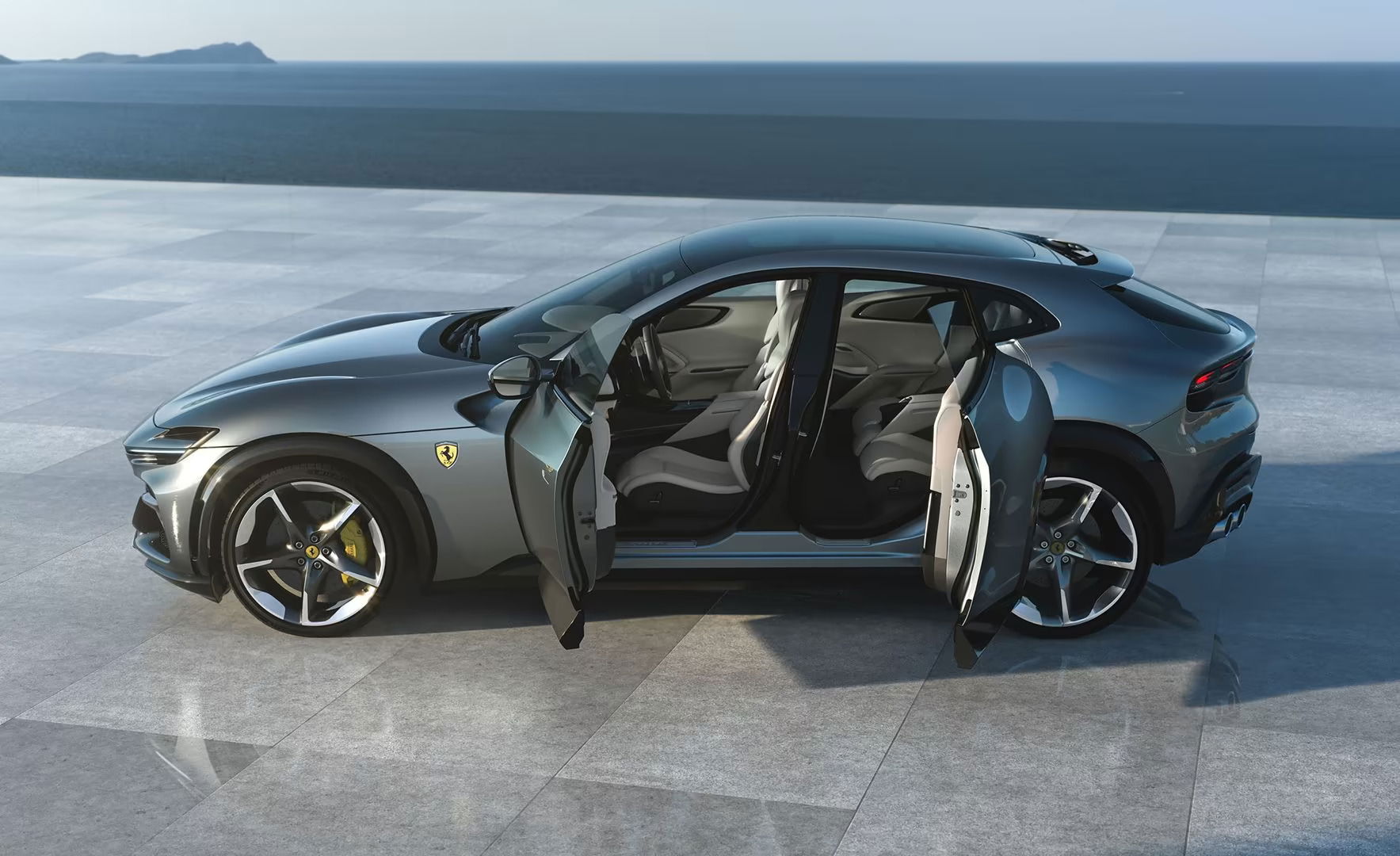
The Purosangue commands a starting manufacturer suggested retail price (MSRP) of $398,350, according to what the Italian automaker reportedly told Car and Driver. With just 3,000 units planned for the first production run, the Purosangue can hardly reach everyone who wants one.
In other words, if you want the Puro, arm yourself with a $400,000 war chest and be quick on the draw – next time. According to the Ferrari, the elusive SUV has already sold out for at least two years.
If you’re wondering what else besides performance that money gets you, what makes the Purosangue truly exceptional is its blend of performance and comfort. The standard offering includes features like the Burmester© audio system, ensuring an immersive auditory experience.
Furthermore, an array of optional extras, such as the brand-new Alcantara® upholstery derived from certified recycled polyester, probably makes the Purosangue the most comprehensive four-door, four-seater SUV in its class.